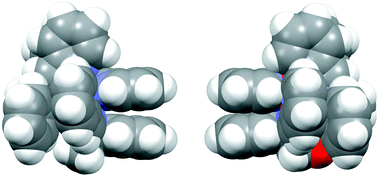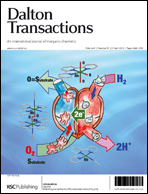Jahn–Teller effects on π-stacking and stereoselectivity in the phenylethaniminopyridine tris-chelates Cu(NN′)32+†
Abstract
Optically pure phenylethaniminopyridine (SC-L) tris-chelates of Fe(II) and other first row transition metal systems have previously been shown to give exclusively the fac structures in the solid state. Here it is shown by


 Please wait while we load your content...
Please wait while we load your content...